 The year was 1972. The Watergate scandal had broken, The Brady Bunch was popular on TV, and Mark Spitz won a record seven gold medals at the Munich Summer Olympics. That was the same year Dr. Joe Smey joined the physical therapy faculty at UConn. Forty years later, Dr. Smey has retired after a long and successful career at the university, having become an icon to physical therapy students across Connecticut and beyond.
The year was 1972. The Watergate scandal had broken, The Brady Bunch was popular on TV, and Mark Spitz won a record seven gold medals at the Munich Summer Olympics. That was the same year Dr. Joe Smey joined the physical therapy faculty at UConn. Forty years later, Dr. Smey has retired after a long and successful career at the university, having become an icon to physical therapy students across Connecticut and beyond.
Smey, also an UConn alum, said he has always loved the Storrs campus, but never imagined he would spend 45 years of his life here.
He first set foot on the UConn campus in 1963 to begin his undergraduate education. Originally from Naugatuck, CT, he was a member of the UConn football team as well as the second family member to become a Husky, following the footsteps of his sister, Barbara.
While he considered several majors, his personal interest in athletics and sports medicine steered him toward physical therapy. Growing up with a cousin with polio also affected his choice. But the defining moment, he recalled, was when he was being treated for a football injury by the UConn athletic trainer and struck up a conversation with the team quarterback, who was taking courses in physical therapy.
“That talk, and the field itself, really resonated with me,” Smey said. “Looking back, I can say without a doubt that taking the physical therapy path became the best decision I ever made.”
Smey joined the U.S. Public Health Service after graduation and was afforded the opportunity to serve as a staff physical therapist in an outpatient clinic in southern California while simultaneously earning a MA in physical therapy from the University of Southern California. He was subsequently assigned back home in Connecticut as chief physical therapist at the U.S. Coast Guard Academy in New London. After holding a similar role at Lawrence and Memorial Hospitals, he joined the University of Connecticut as an assistant professor in physical therapy and spent the next four decades making a local, regional and national impact in the physical therapy field.
Smey built a successful career, first starting in the faculty and progressing into leadership roles, including becoming director of the physical therapy program and later associate dean and dean of the School of Allied Health. Along the way he earned his EdD from Clark University in education and program management and served as Director of Rehabilitation at John Dempsey Hospital in Farmington. He did this while simultaneously running the PT academic program in Storrs. The position at John Dempsey helped him learn more about clinical practice and the management side of physical therapy. He also served various leadership roles in both the Connecticut Physical Therapy Association and American Physical Therapy Association. When physical therapy transitioned from the School of Allied Health to the School of Education, Smey happily returned to the classroom and taught in the Doctor of Physical Therapy Program.
“Fred Adams, the first dean of the School of Allied Health and the first African-American dean at UConn, helped the younger faculty in physical therapy realize the value of diversity,” Smey said. “I learned a lot from him and the team of leaders brought to the school.” Early in his career, as President of the Connecticut Physical Therapy Association, Smey indicated that he knew just about every physical therapist in the state. He began to become increasingly concerned about issues of diversity and gender equity in physical therapy and began to use his contacts locally and nationally to encourage a more diverse population to consider physical therapy as a career. He also spearheaded an initiative nationally to eliminate economic and career barriers recognized to exist for women in the field. He went on to serve on national task forces, and participate in nationwide workshops, focusing on racial diversity and gender equity in physical therapy and allied health.
Smey acknowledged his love for teaching from the very beginning. He realized he had a lot to learn, but he always valued getting to know the students as well as he could. “I include humor in anything I’m teaching. Whether it’s neurology or management, it’s been a long-term interest to use humor as a way to connect with the students.”
“I try to be participatory in a sense of knowing the students,” he added. “I’ve had such pride in my teaching, and I’ve always felt I’ve done a good job.”
Faculty member and PT alumnus Dr. Pamela Roberts was one of many students affected by Smey’s work as PT Program director.
“I was co-teaching and had courses of my own, in addition to clinical experiences I coordinated. As an adjunct faculty member, I was working full-time hours,” Roberts recalled.
“Joe mentored me toward applying for a full-time tenure track position. My interview was just days after my second child was born. Joe was thoughtful and moved the interview to the ground level.”
Roberts ended up getting the position and worked along-side Smey for many years. She said he supported and encouraged her through her tenure years, including suggesting that she continue her education. Years later, when Roberts worked for the State
Department of Education for therapy services in schools, she ran into a lot of PT alumni. “Invariably, their first question had something to do with Joe Smey. They share stories of Dr. Smey and site him as the motivator, the challenger, the supporter, the leader they wanted to become. They ask about other faculty, but the first question is always about Dr. Joe Smey.”
Another student dramatically impacted by Smey was Roland Perreault, who finished the program in 1982 and stayed in contact with Smey throughout the years. As members of the Connecticut Physical Therapy Association, they would often encourage one another on critical issues related to their profession.
“Dr. Smey ran for the APTA Board of Directors, and I was there to support him. Throughout this time, Dr. Smey served as mentor to me and countless others regarding our duties and responsibilities as members of the professional association,” Perreault said.
Perreault also mentioned the legacy of Smey: “Dr. Smey has been the face and name of the PT program over these many years, and the evolution of the program. For so many graduates and friends of the program, that identity will be greatly missed.
“(He) has been a leader because he allowed himself to grow and evolve into a socially and culturally aware person and has been willing to take on the challenges affecting the underrepresented and the most needy.”
“I am proud to have him as a teacher, mentor, colleague and friend,” said Perreault. “He has remained committed to causes of the profession and social action. His insight has influenced many of his students and encouraged a culture within the program toward awareness and service to others.”
Smey’s impact on students was monumental from day one, according to Chuck Cota, who was in Smey’s class the first year he taught at UConn: “He was young, not much older than the students he was teaching. Yet from those early years, he was a dynamo, very enthusiastic about the PT profession and passionate about his love for UConn,” recalled Cota.
Smey’s lectures were also sprinkled with personal experiences that always made the subject matter easier to grasp, Cota said. “At the end of those first classes, Smey would always ask us if he was doing okay. He wanted so much to help us be good clinicians and ambassadors for the school.”
As the years went by, Smey would take great pride to hear of the accomplishments of his former students—and never missed the opportunity to brag about them, Cota said.
Cota’s three sons would also eventually go on to UConn and study under Smey. “They are grateful for Joe’s guidance while in school. He was never too busy to advise them in their careers or take the time to listen,” said Cota.
“It seems fitting that I was in Dean Smey’s first class and our son Kevin (DPT ’12) was in his last graduating class of therapists,” Cota said proudly. “Joe’s career has spanned generations of physical therapists, and his impact on the profession for years to come. Joe is a ‘rock star’ in the work of physical therapy.”
In lieu of a retirement celebration, Dr. Smey requested that folks who wanted to honor him should consider supporting his scholarship that will help future PT students. The scholarship was started by his former students. To support the Joseph W. Smey, ’68 EdD, PT Endowed Scholarship in Physical Therapy, click here. Be sure to include fund name on the form. For any questions, contact Heather McDonald at hmcdonald@foundation.uconn.edu

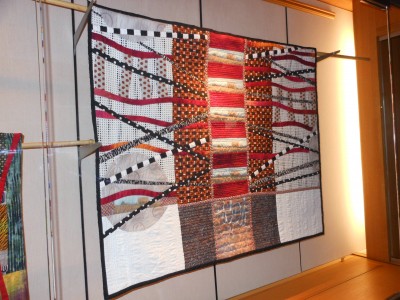 In 2008, Catherine Whall Smith was working on a quilt about the presidents of the United States. She thought Hillary Clinton would get the Democratic nomination and then win the presidency. Then Clinton conceded. So Smith excluded Clinton and just changed the name of the quilt to “Where’s Hillary?”
In 2008, Catherine Whall Smith was working on a quilt about the presidents of the United States. She thought Hillary Clinton would get the Democratic nomination and then win the presidency. Then Clinton conceded. So Smith excluded Clinton and just changed the name of the quilt to “Where’s Hillary?”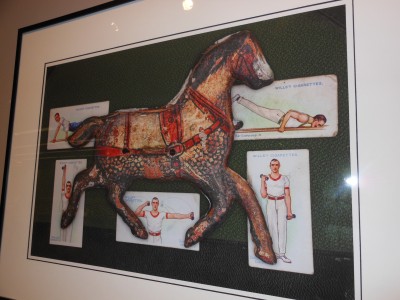 ‘Natura Morta’
‘Natura Morta’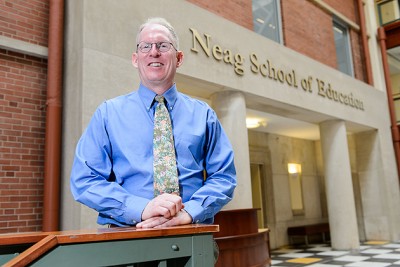
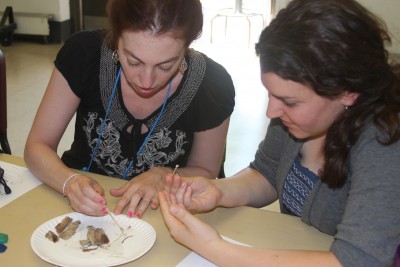
 The year was 1972. The Watergate scandal had broken, The Brady Bunch was popular on TV, and Mark Spitz won a record seven gold medals at the Munich Summer Olympics. That was the same year Dr. Joe Smey joined the physical therapy faculty at UConn. Forty years later, Dr. Smey has retired after a long and successful career at the university, having become an icon to physical therapy students across Connecticut and beyond.
The year was 1972. The Watergate scandal had broken, The Brady Bunch was popular on TV, and Mark Spitz won a record seven gold medals at the Munich Summer Olympics. That was the same year Dr. Joe Smey joined the physical therapy faculty at UConn. Forty years later, Dr. Smey has retired after a long and successful career at the university, having become an icon to physical therapy students across Connecticut and beyond. Come home to UConn and show your true Husky spirit! Go Huskies!
Come home to UConn and show your true Husky spirit! Go Huskies!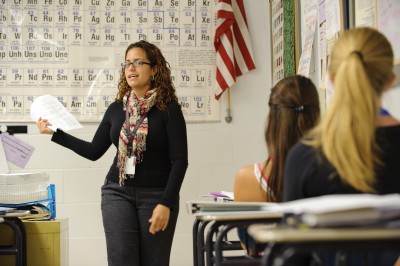
 Accolades – below are news and notes from our alumni, faculty, staff, and students. We are proud of all the amazing accomplishments by our Neag family. If you have an accolade to share, we want to hear from you! Please send any news items (and story ideas) to
Accolades – below are news and notes from our alumni, faculty, staff, and students. We are proud of all the amazing accomplishments by our Neag family. If you have an accolade to share, we want to hear from you! Please send any news items (and story ideas) to 